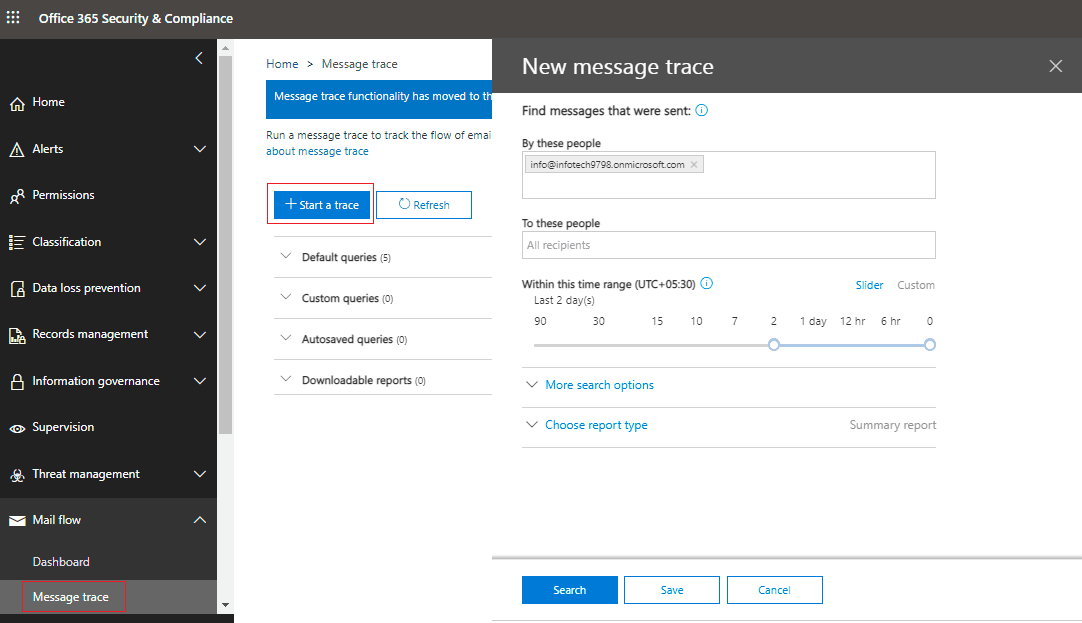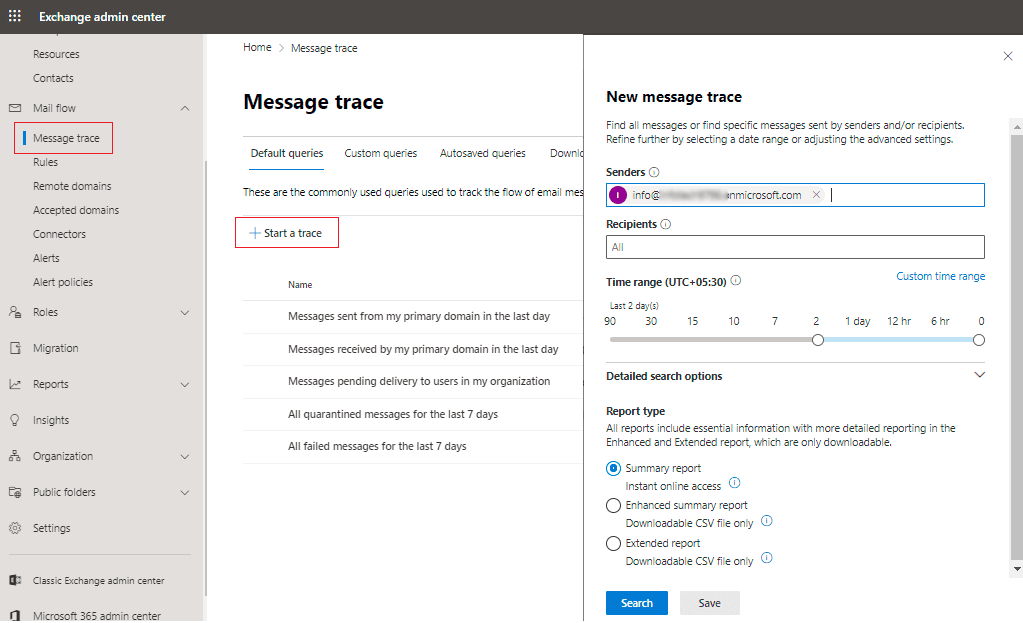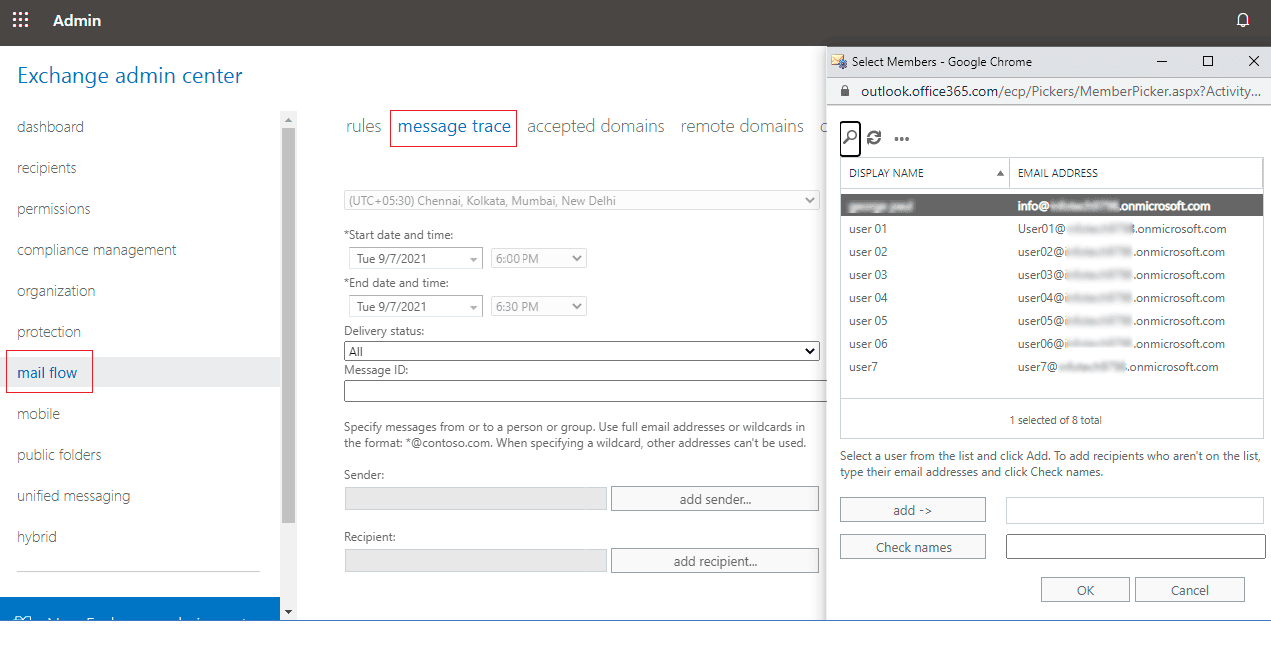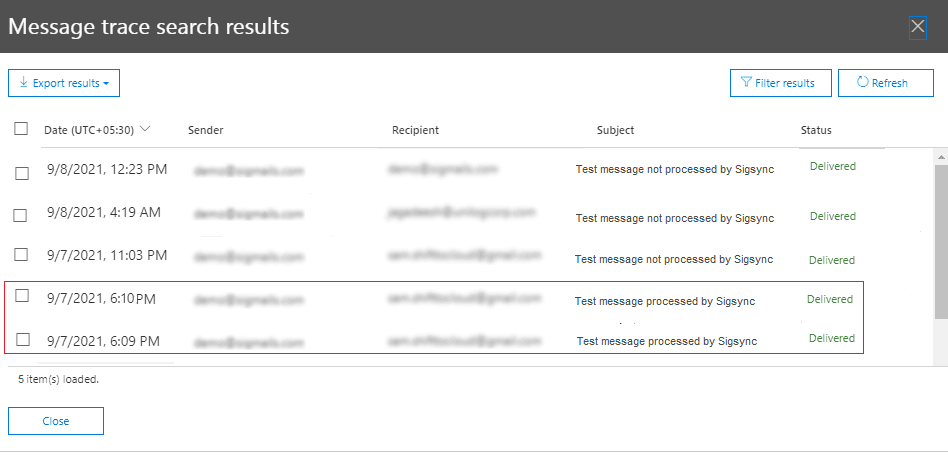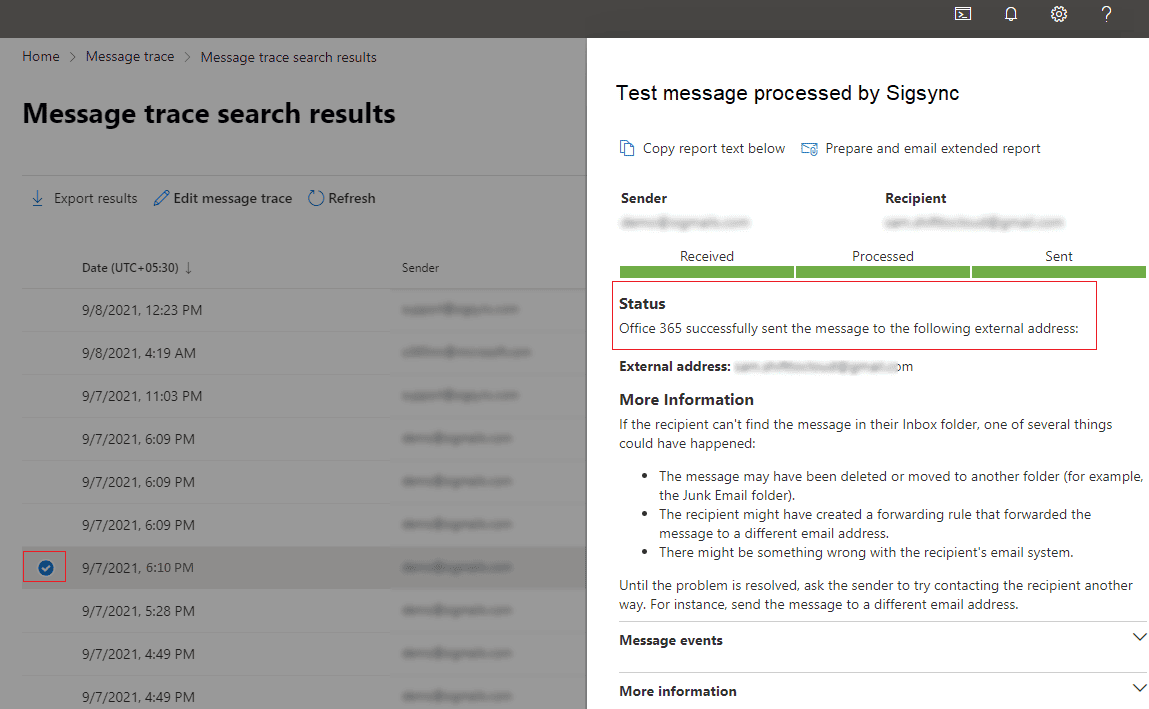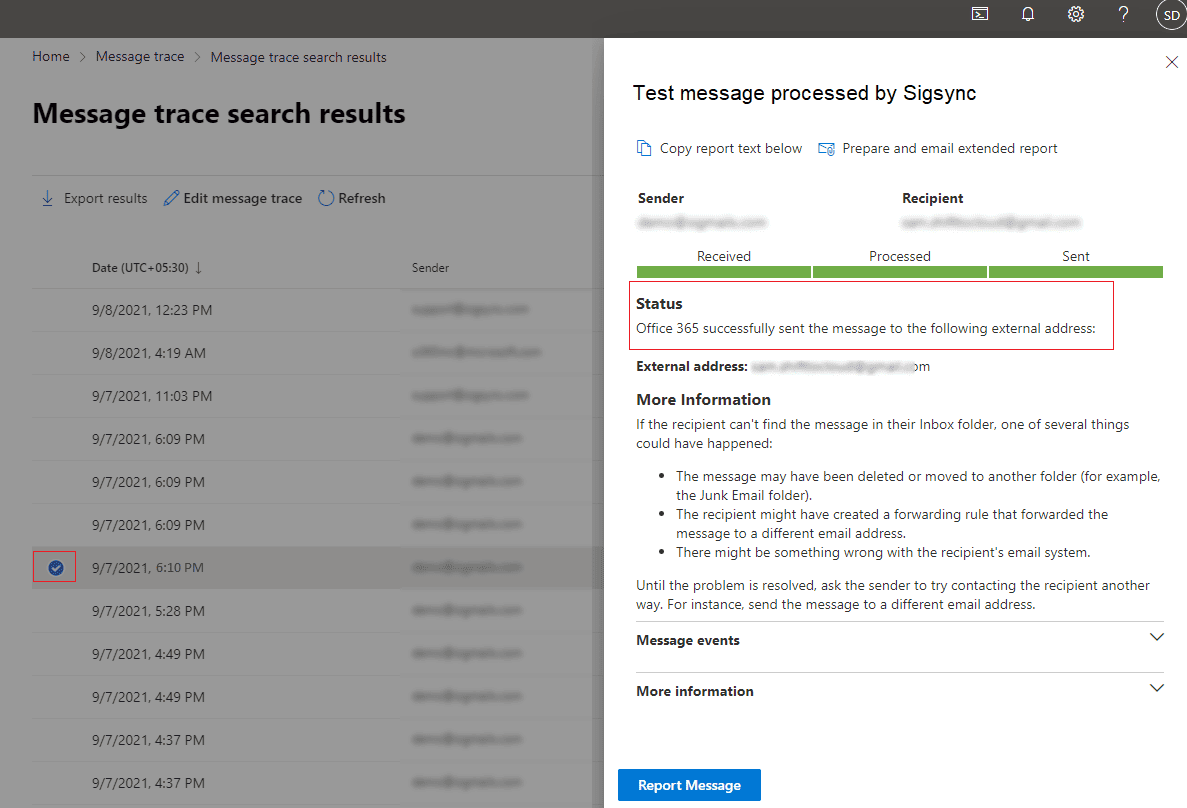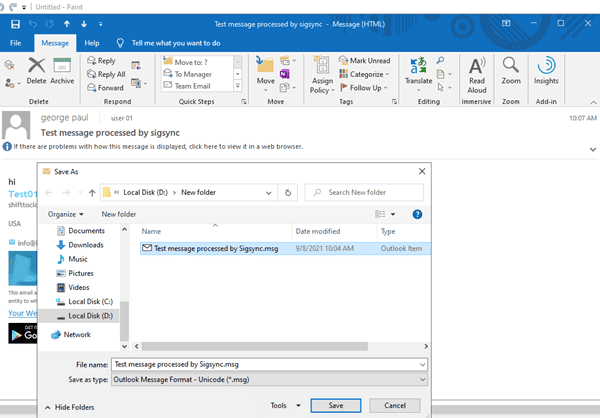How to verify if emails are routed through the Sigsync service in Microsoft 365?
You would like to verify whether the email sent was properly routed through the Sigsync Email Azure Service.
Resolution:
Send a test mail from your account or from another user account.To verify if the email was routed through Sigsync service, you need to
- Set the sender scope for this account during Exchange online connectors configuration.
- It is included in any one of the active rules you created.
- The test mail holds good for the conditions set in the Senders, Recipients and Keywords tabs.
Once you ensure the above check points, send a test message to yourself. Now, follow the methods below to check whether your message was routed properly through Sigsync service:
Using the Message trace
First, create a message trace report and verify the details in it.
Steps to create a message trace report in the Microsoft 365 admin center
- Open the Office 365 Security & Compliance center and select Mail flow -> Message trace.
- Click on the Start a trace button to get the New message trace window, then find the account you used to send the test message under the field By these people as shown.
- Set the time and date in such a way that the test message sent is included in it.
- In Choose report type, select Summary report to create a simple report.
- Click on the Search button to run a message trace and create a report.
Steps to create a message trace report in the Exchange admin center (new version)
- Sign in to the Exchange admin center and navigate to Mail flow -> Message trace.
- Click on + Start a trace to get the New Message trace window, then use the Senders field to choose the account you used to send the test message.
- Set the time range for the message trace report to only count when the test message was sent.
- Under Report type, make sure you select Summary report for a simple report.
- Click on the Search button to run a message trace and create a report.
Steps to create a message trace report in the Exchange admin center (classic version)
- Sign in to the Exchange admin center and navigate to mail flow -> message trace.
- Choose the time period during which message was sent.
- Click on the add sender button to choose the account you added to send the test message.
- Click on the Search button to run a message trace and create a report.
Let’s understand the message trace report generated in the Microsoft 365 Security & Compliance centre. The test email appears twice on the Message trace, because the mail is first sent to the Sigsync Office 365 Azure service using the outbound connector, then it is being received back in Exchange Online through the inbound connector and finally sent to the recipient.
This shows that the mail is routed through Sigsync Office 365 Azure service.
To view the message trace details, click on the result from an earlier time, as shown below.
If the message was sent to Sigsync service, the address in the Destination smart host field will refer to as xxxx.Sigsync.com This confirms that it was sent to the Sigsync Email Azure Service.
Note: If the connectors are automatically configured, the name of the connector will be Sigsync Outbound Connector, else the name may be different.
Open the second message trace with a later date, which shows that the message was sent to the correct recipient.
Using the message header
To verify the message header, you need to send an email which is saved as an MSG or EML file. In case the message is sent to an external recipient, request the person to provide you the copy of the message. Once you receive it, you can find the necessary details in the message header.
Note: The recipient’s reply is not enough to check if the message was properly routed through Sigsync service, instead request the recipient to send you a file having the original message.
Steps to save an email message as a file in Outlook
- Sign in to your Outlook account.
- Double click on the mail to open it in a new window.
- Go to File and click Save as.
- Select the MSG file type, choose a location and click Save.
Steps to interpret the information available in the message header
- Open the message in Outlook.
- Go to File and then Properties.
- In the Internet header field, find the following phrase:
X-Sigsync-Processed: true
If this item is included in the header, the message has been routed through the Sigsync Office 365 Azure Service.
Note: Sigsync on the client mode adds signatures directly in Outlook when you compose an email. In the client-side mode, emails are not routed through Sigsync services to get signatures. Therefore, this solution is applicable only to server-side email signatures.
Streamline Email Signature Management with a Free On-demand Demo from Sigsync
Sigsync email signature service provides effortless, centralized signature management for Office 365 and Exchange. Our team can assist you in quickly setting up company-wide signatures. Request a free on-demand demo to see how Sigsync can simplify your email signature management process.

